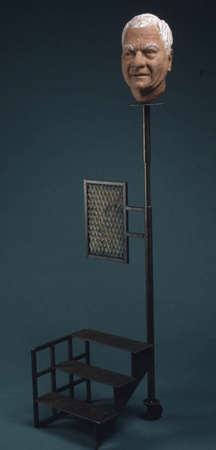GEORGIA STRANGE
bio
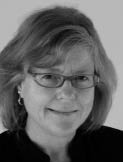 Georgia Strange earned an EdD in Higher Education from the University of Georgia. She also holds a bachelor’s degree in Biological Sciences, a master’s degree in Science Education and an MFA in Fine Arts from Indiana University.
Georgia Strange earned an EdD in Higher Education from the University of Georgia. She also holds a bachelor’s degree in Biological Sciences, a master’s degree in Science Education and an MFA in Fine Arts from Indiana University.
Dr. Strange served as an arts administrator and professor at University of Georgia, Indiana University, and Centre College of Kentucky. She also was on the faculty at The Ohio State University. Dr. Strange received the James P. Holland Award for Exemplary Teaching and Service to Students and the Herman Frederic Lieber Memorial Award in Recognition of Distinguished Teaching at Indiana University. She was selected as a Senior Teaching Fellow at the University of Georgia and admitted to its Teaching Academy.
Service in the Peace Corps in Liberia, West Africa, work on an archaeological excavation in Greece, study in Italy, and research travel in China continue to be important influences in her artwork. She was awarded an Indiana Arts Commission Masters Fellowship, and several competitive research grants at universities where she has taught. In addition to exhibiting at many venues across the country, she has exhibited work as a National Affiliate member artist at SOHO20 since 1990.
Dr. Strange served on the Board of Directors of the College Art Association and the Board of Directors for the National Council of Arts Administrators. She continues to be active in the National Association of Schools of Art and Design.
statement
Residue
“As a young child, I constructed forts and treehouses from branches and scavenged wood. Living in a crowded house, those small outdoor spaces were my version of Virginia Woolf’s Room of One’s Own. Food was never wasted in my house. Recipes were built from what was on hand. This practice of making-do appeared common in the neighborhood as my playmates also begged or borrowed something edible for the soupy mess that we tended over a smoky backyard fire. College was popcorn, cream of wheat, and working in restaurants for a decent meal. Funny that I always thought I had grown up poor until I joined the Peace Corps in West Africa. Volunteering taught me that it was much harder to return to America than to leave. For the first time I saw our nation’s wealth. I was confronted with its wastefulness as I contrasted our disposable society with children in Liberia creating imaginative toys from Fanta soda cans with their bare hands.
My early building tendencies translated into artmaking, but my interaction with nature did not. Although I had concerns about the environment, my art practice somehow was independent. Instead, I was more focused on the human species and its fragility, a personal debate that overshadowed any sense of environmental responsibility. Serendipitously, a new initiative to integrate sustainability across the curriculum was gaining momentum at my university, which gave me an opportunity to include environmental awareness into the courses that I taught. To teach with any authenticity, my studio had to reflect the same values as my classroom lectures.
Picasso and Braque’s use of collage, an ancient printing technique, led to experimentation and proliferation of material inventiveness and meaning. A century later, repurposing ordinary materials is much more than an aesthetic transformation of the quotidian. The benefits of environmental sustainability are influencing artists to address survival on a global scale.
Residue has become my organizing principle; consequently, I collect life’s detritus such as dryer lint and soap ends. I recycle clay left behind on the wedging table by students. Abandoned pieces of wood large and small are joined to make anthropomorphic chairs, my body’s surrogates with a more complex purpose. All my gears are in neutral; I am steady-state, holding my own. With luck and strategy, I may leave behind something worthwhile made from anonymous residue.” — Dr. Georgia Strange
work
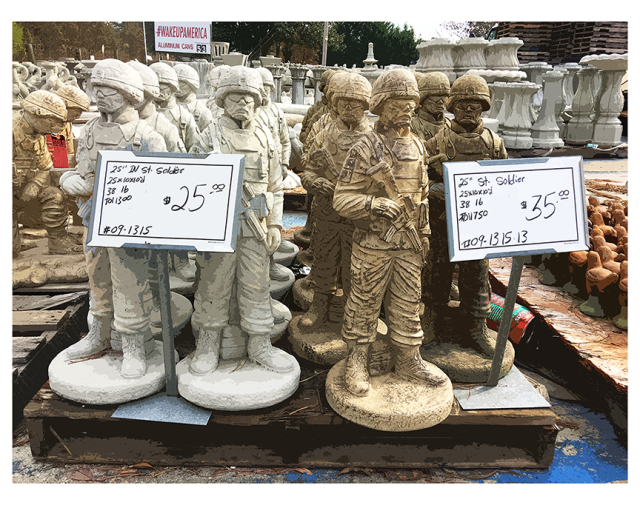

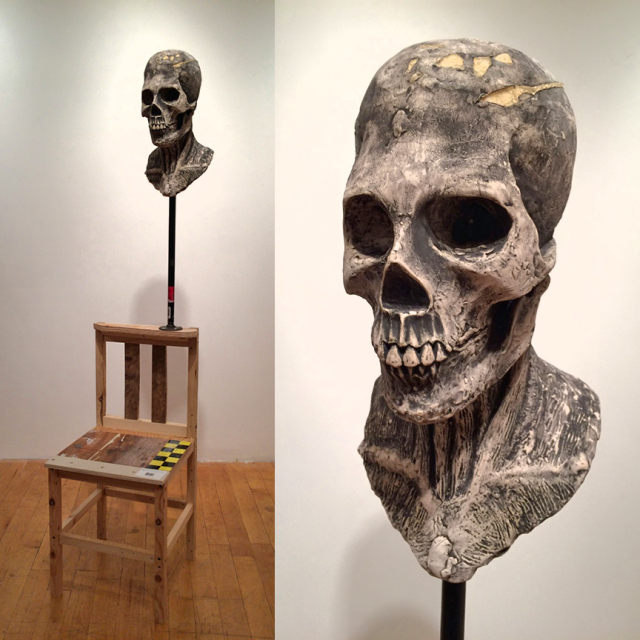
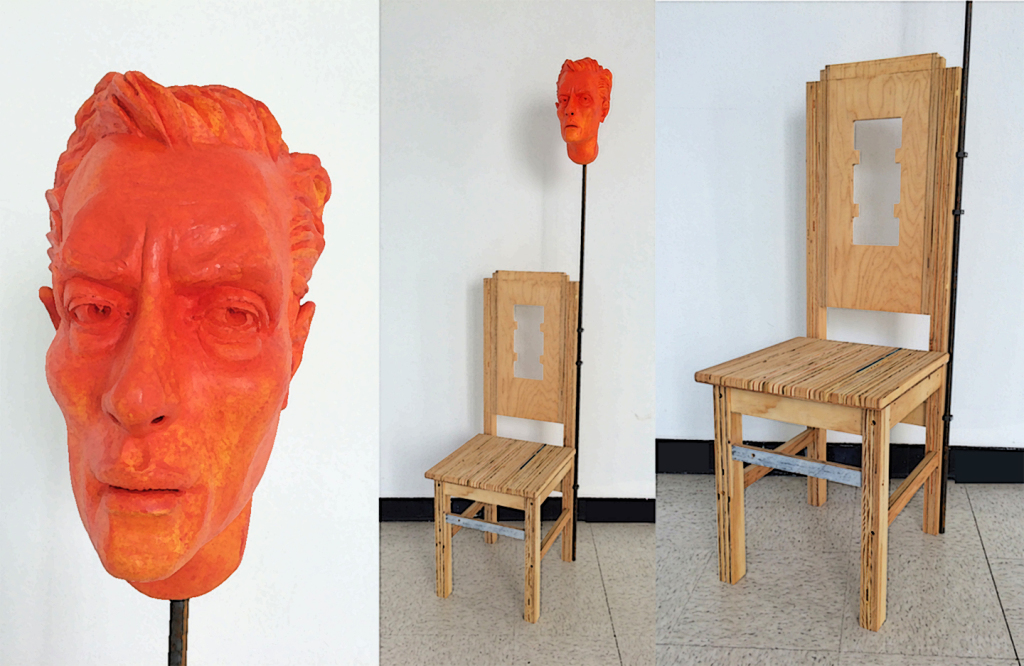
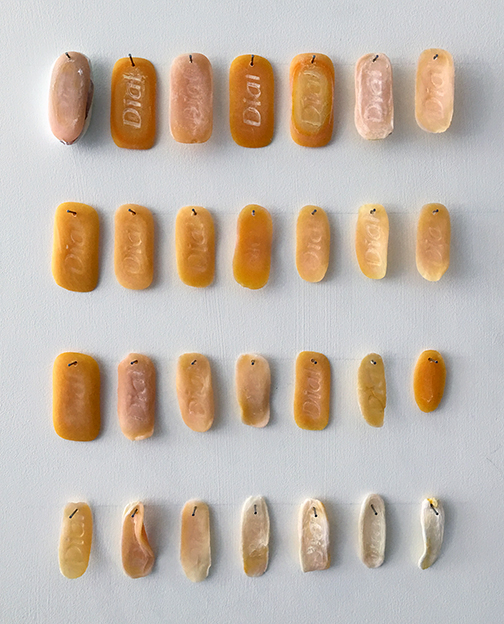
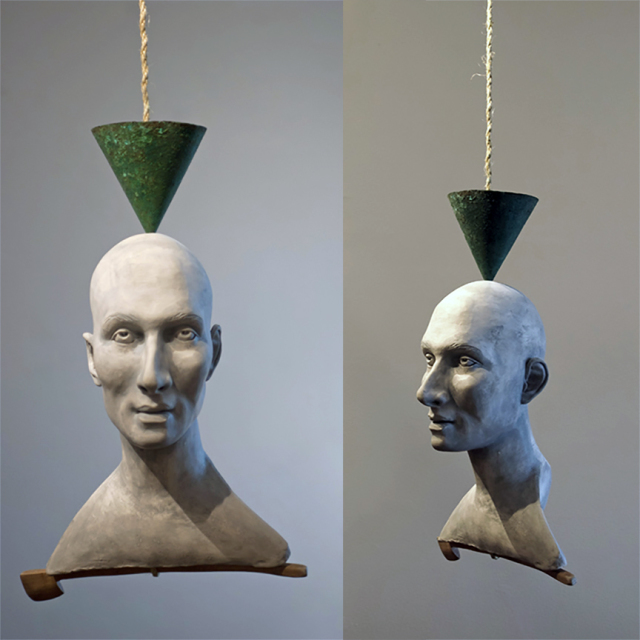
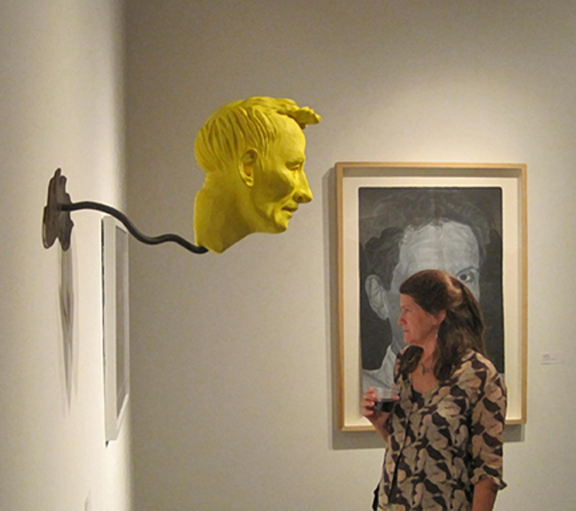
Imaginary Friend: Worry, 2011

